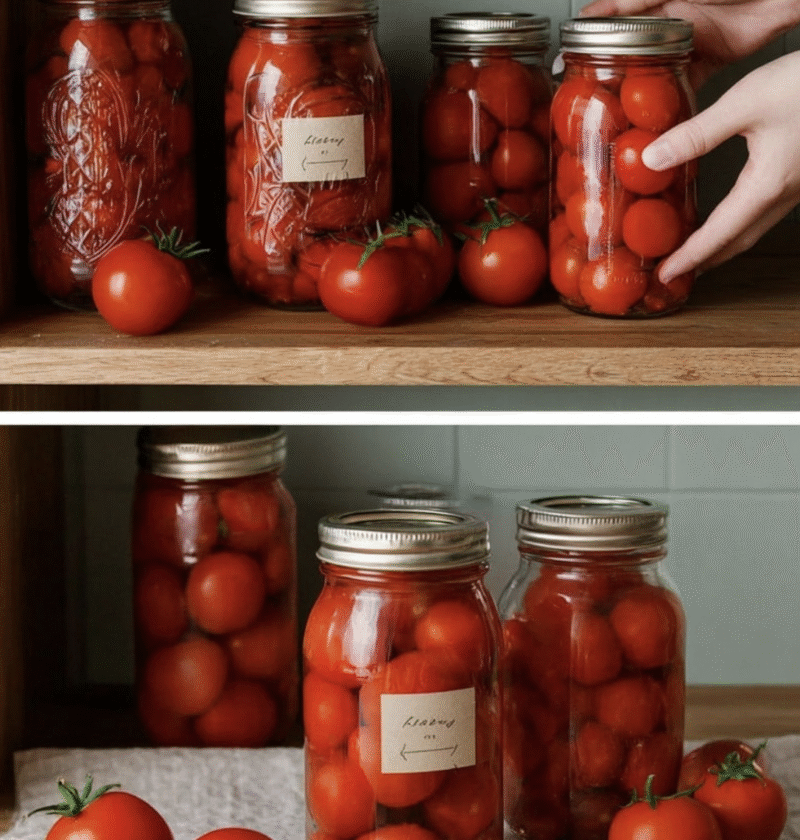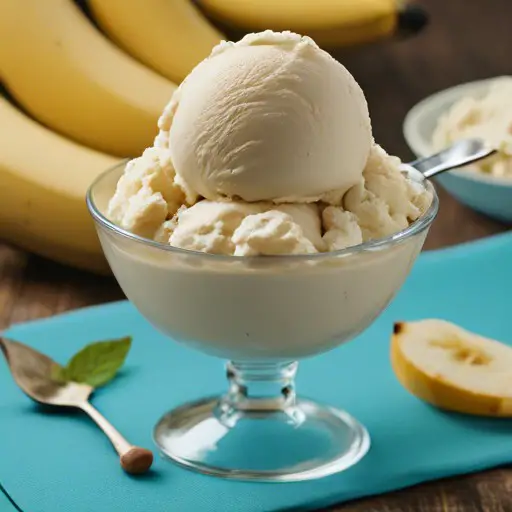Introduction
Imagine being able to enjoy the taste of fresh tomatoes all year round without the need for vinegar or preservatives. This revolutionary method allows you to savor the essence of ripe tomatoes even during the off-season. Whether you are a cooking enthusiast or someone who appreciates the natural flavors of produce, this technique will change the way you view tomatoes forever.
Tomatoes have a rich history dating back centuries, with origins in South America and eventual worldwide popularity. Known for their versatility in culinary applications, tomatoes are a staple ingredient in various cuisines, from Italian pasta sauces to Mexican salsas. Preserving the freshness of tomatoes without vinegar opens up a world of possibilities in the kitchen.
In this article, we will delve into the art of preserving tomatoes without vinegar, exploring the step-by-step process and highlighting the reasons why this method stands out. Get ready to embark on a journey that will elevate your culinary skills and delight your taste buds with vibrant tomato flavors.
Join us as we uncover the secrets behind preserving tomatoes for extended periods without compromising on taste or quality.
Why You’ll Love This Preservation Method
One of the key reasons why this preservation method is so beloved by culinary enthusiasts is its ability to retain the natural sweetness and acidity of fresh tomatoes without the overpowering tanginess of vinegar. By avoiding the use of vinegar, you can enjoy the pure essence of ripe tomatoes in all their glory.
Furthermore, this technique allows you to control the level of seasoning and flavor profile of the preserved tomatoes, giving you the freedom to customize them according to your preferences. Whether you prefer a more savory or herb-infused taste, this method offers endless possibilities for culinary creativity.
If you are health-conscious or have dietary restrictions, you’ll appreciate that this preservation method is free from artificial additives and preservatives commonly found in store-bought tomato products. By using simple, natural ingredients, you can ensure that your preserved tomatoes are wholesome and nutritious.
Experience the joy of having fresh-tasting tomatoes at your fingertips throughout the year, adding a burst of flavor to your dishes and elevating your meals to new heights of culinary excellence.
Ingredients
When it comes to preserving tomatoes without vinegar, you only need a handful of high-quality ingredients to achieve exceptional results. Here is a list of the key components required for this preservation method:
1. Ripe tomatoes – Choose ripe, firm tomatoes with vibrant color and a slightly soft texture for the best flavor.
2. Sea salt – Opt for high-quality sea salt to enhance the natural sweetness of the tomatoes without overpowering them.
3. Olive oil – Select a good-quality extra virgin olive oil to add richness and depth to the preserved tomatoes.
4. Fresh herbs (optional) – Consider adding fresh herbs like basil, oregano, or thyme to infuse the tomatoes with aromatic flavors.
5. Garlic cloves (optional) – For a hint of pungent flavor, you can include garlic cloves in the preservation process.
Feel free to experiment with different herbs and seasonings to create custom variations of preserved tomatoes that suit your taste preferences.
Step-by-Step Instructions
Preserving tomatoes without vinegar is a simple yet rewarding process that allows you to enjoy the flavors of summer all year long. Follow these step-by-step instructions to create your own batch of preserved tomatoes:
1. Wash and dry the tomatoes thoroughly to remove any dirt or residue. Cut the tomatoes into halves or quarters, depending on your preference.
2. Sprinkle a generous amount of sea salt over the cut tomatoes, ensuring that each piece is coated evenly. The salt will help draw out excess moisture from the tomatoes.
3. Arrange the salted tomatoes in a single layer on a baking tray lined with parchment paper. Let the tomatoes sit at room temperature for about an hour to allow the salt to penetrate the flesh.
4. Preheat your oven to a low temperature (around 200°F or 95°C). Place the tray of tomatoes in the oven and slow-roast them for several hours until they are semi-dried and concentrated in flavor.
5. Once the tomatoes are semi-dried, remove them from the oven and let them cool to room temperature. Transfer the tomatoes to sterilized glass jars and cover them with olive oil. Add fresh herbs and garlic cloves if desired.
6. Seal the jars tightly and store them in a cool, dark place for optimal preservation. The tomatoes will continue to develop flavor over time, becoming more intense and delicious with each passing day.
Expert Tips for Success
To ensure that your preserved tomatoes turn out perfectly every time, consider the following expert tips:
• Choose tomatoes that are at the peak of ripeness for the best flavor and sweetness.
• Adjust the amount of salt according to your taste preferences, keeping in mind that the salt will enhance the natural flavors of the tomatoes.
• Use clean, sterilized jars to prevent contamination and spoilage of the preserved tomatoes.
• Store the preserved tomatoes in a cool, dark place away from direct sunlight to maintain their quality and flavor.
By following these tips, you can create a batch of preserved tomatoes that are bursting with flavor and ready to elevate your culinary creations.
Variations and Substitutions
While the basic method of preserving tomatoes without vinegar is simple and versatile, there are numerous ways to customize the recipe to suit your taste preferences. Here are some creative variations and substitutions you can try:
• Add a touch of balsamic vinegar for a hint of sweetness and acidity.
• Experiment with different herbs and spices such as rosemary, thyme, or chili flakes for unique flavor profiles.
• Roast the tomatoes with garlic and onions for a savory twist that pairs well with pasta dishes and grilled meats.
• Mix in sun-dried tomatoes or capers for an extra burst of umami flavor in your preserved tomatoes.
Feel free to get creative and explore new flavor combinations to make your preserved tomatoes truly one-of-a-kind.
Serving Suggestions
Preserved tomatoes without vinegar can be used in a variety of dishes to add depth and richness to your meals. Here are some serving suggestions to inspire your culinary creations:
• Toss the preserved tomatoes with cooked pasta, fresh basil, and Parmesan cheese for a simple yet flavorful pasta dish.
• Use the preserved tomatoes as a topping for bruschetta or crostini, paired with creamy burrata cheese and a drizzle of balsamic glaze.
• Incorporate the preserved tomatoes into salads, sandwiches, or antipasto platters for a burst of umami flavor.
• Blend the preserved tomatoes into sauces, soups, or stews to add richness and depth to your culinary creations.
Get creative with how you use your preserved tomatoes and discover new ways to enhance the flavor of your favorite dishes.
FAQs
Q: How long can the preserved tomatoes be stored?
A: When stored in a cool, dark place, preserved tomatoes can last for up to 12 months. However, for the best quality and flavor, it is recommended to consume them within 6-8 months.
Q: Can I freeze the preserved tomatoes?
A: Yes, you can freeze the preserved tomatoes in airtight containers for long-term storage. Thaw them in the refrigerator before using, and they will retain their flavor and texture.
Q: Can I use different types of tomatoes for this preservation method?
A: Absolutely! Experiment with various tomato varieties such as Roma, cherry, or heirloom tomatoes to discover unique flavor profiles and textures in your preserved tomatoes.
Q: Are preserved tomatoes without vinegar suitable for vegan and gluten-free diets?
A: Yes, this preservation method is naturally vegan and gluten-free, making it suitable for individuals following these dietary preferences.
Final Thoughts
Preserving tomatoes without vinegar is a rewarding culinary experience that allows you to enjoy the flavors of summer all year long. By following this simple yet effective method, you can savor the natural sweetness and acidity of ripe tomatoes in a versatile and convenient form.
Whether you use the preserved tomatoes in pasta dishes, salads, sandwiches, or sauces, their vibrant flavor and rich texture will elevate your meals to a whole new level. Embrace the art of preserving tomatoes without vinegar and unlock a world of culinary possibilities in your kitchen.
Get creative, experiment with different flavor combinations, and make this preservation method your own. Share your culinary creations with friends and family, and let the vibrant flavors of fresh tomatoes shine in every dish you prepare.
Start your journey of preserving tomatoes without vinegar today and experience the joy of capturing the essence of summer in a jar.

Fresh Tomatoes for 2 Years, Without Vinegar:
Learn how to preserve the natural sweetness and acidity of fresh tomatoes without using vinegar. This method retains the essence of ripe tomatoes for year-round enjoyment, allowing you to elevate your dishes with vibrant flavors.
Ingredients
- 6 large ripe tomatoes
- 2 tbsp sea salt
- 1/2 cup extra virgin olive oil
- Fresh herbs (optional)
- Garlic cloves (optional)
Directions
-
Wash and dry the tomatoes, then cut them into halves or quarters.
-
Sprinkle sea salt over the cut tomatoes and let them sit at room temperature for an hour.
-
Slow-roast the salted tomatoes in the oven at 200°F for several hours until semi-dried.
-
Cool the tomatoes, transfer to sterilized jars, add olive oil, fresh herbs, and garlic cloves.
-
Seal the jars tightly and store in a cool, dark place for optimal preservation.







